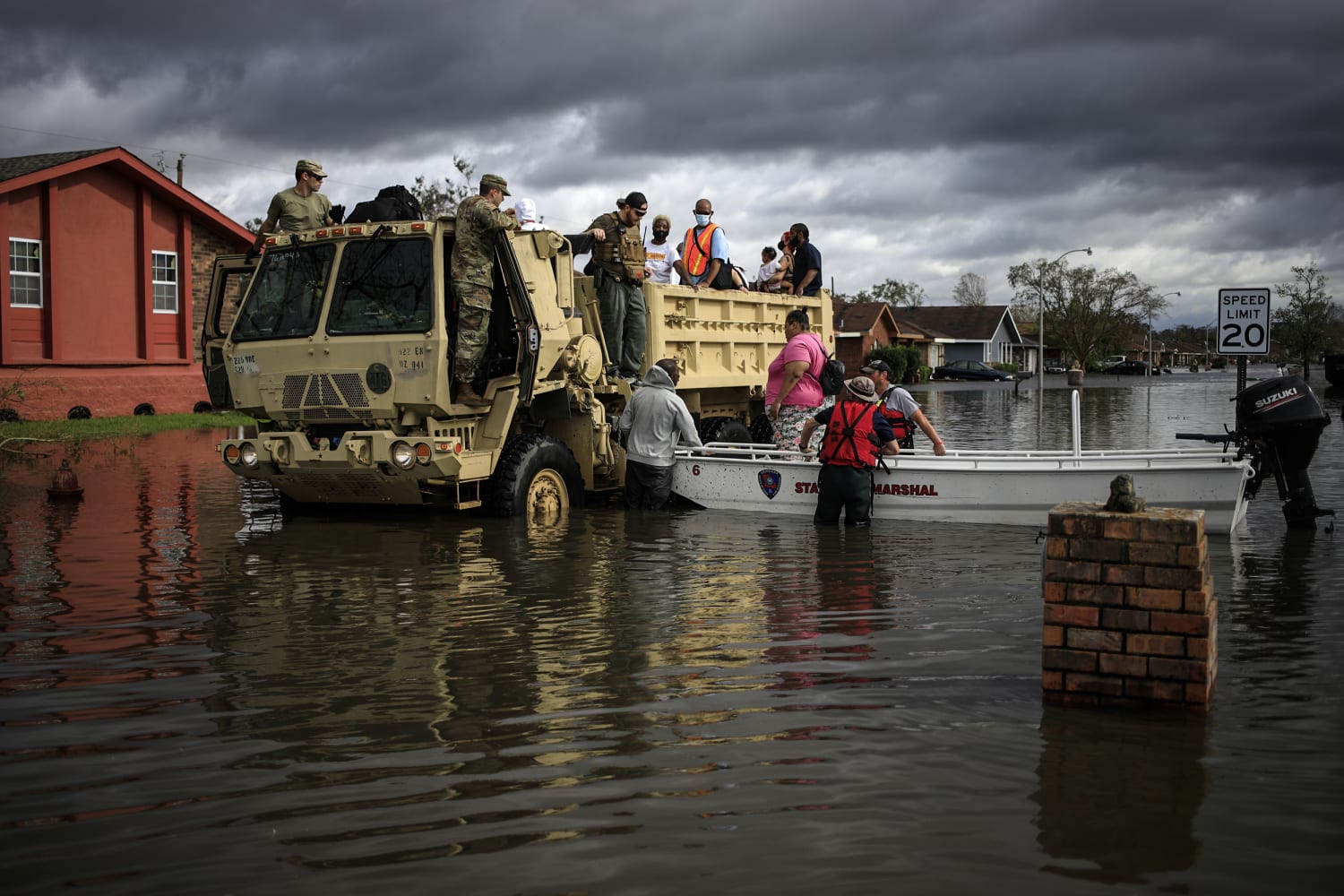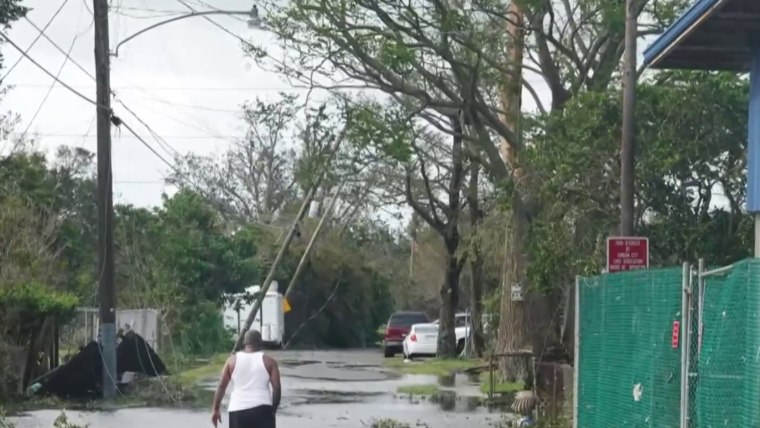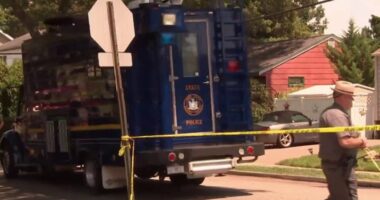Louisiana’s battered hospitals were bracing for another challenge Monday in the wake of Hurricane Ida — an influx of new patients.
And with services already stretched to capacity by the Covid-19 crisis, the still unanswered question was where to put them.
Gov. John Bel Edwards told MSNBC’s Stephanie Ruhle that he is prioritizing “shoring up our hospitals so they can continue to serve all of their patients and the people who have been injured and haven’t been able to get to the hospital yet because of something that happened during the storm.”
So far, Edwards said, there has been just one hurricane-related fatality but that number is likely to go up after the damage assessment gets underway.
Top on his list, Edwards said, is “restoring communications, getting those back in a better place.“
But with New Orleans and wide swaths of the state still without power, it remained to be seen how long that would take.
When Ida was roaring through the state on Sunday, doctors and nurses at a hospital directly in the path of the storm, Thibodaux Regional Health System, were forced to manually pump air into the lungs of patients after a generator failed and the ventilators stopped working in an intensive care unit.
All were successfully moved to another floor that still had power, said Mindy Faciane, a spokeswoman for the Louisiana Department of Health.
Elsewhere in the state, some of the most critically ill patients at other hospitals were also transferred Monday as evacuations from storm-damaged facilities were underway.
Dozens of patients from the Ochsner Health Care System hospitals in Luling, Raceland and Houma were moved to hospitals in Baton Rouge, Morgan City and New Orleans because of hurricane damage to roofs, generator failures and flooding.
More than 100 patients are being transferred just from the Terrebonne General Health System facility in the hard-hit city of Houma.
“Ida was a rough ride yesterday,” Ochsner President and CEO Warner Thomas said. “Every facility we have has some sort of roof issues. We have roofers on the way now.”
No patients or staffers were injured as Ida passed through, and “the evacuation went orderly,” Thomas said.
Also, most of the generator issues have been resolved, and the hospitals have enough fuel to keep them going for at least 10 more days. But more trouble is coming, he said.
“We know we will start getting busier, and we are prepared to handle that,” Thomas said.
NBC News contributor Dr. Kavita Patel, who helped with the response to Hurricane Katrina in 2005 and saw firsthand how Louisiana’s struggling hospital system was tested, said she’s not as confident.
“Here’s the good news,” Patel said. “The area has been more battle-tested and prepared than you can imagine. They did not prepare for a pandemic on top of that.”
Normally, Patel said, Louisiana hospitals with too many patients and not enough beds would have the option of evacuating the most endangered critically ill patents “to Texas and surrounding states.”
But, even before Ida burst on the scene, Louisiana and its neighbors were contending with a sharp rise in new Covid-19 cases and struggling to find enough beds for sick patients. “There’s no room there,” Patel said.
Then there is this concern: Ida could potentially make Louisiana’s already bad Covid-19 crisis a whole lot worse because people were forced to huddle in crowded shelters before the storm and many are now staying there indefinitely because their homes are wrecked.
“We’re likely to see more infections after this time period,” Patel said. “We’ve had 18 months of experience to know that congregate settings, especially with children and other unvaccinated adults, can become superspreader events.”
“We know so much more how to contain this — masks, testing people, making sure that as soon as someone is symptomatic isolating them,” Patel said. “But again you’re doing this through an active tropical storm. … This is going to be a challenge in the coming weeks.”
Edwards told Ruhle he’s aware of the dangers of having so many people in shelters and that health officials will be insisting that all safety protocols are followed.
“They will be wearing masks,” the governor said. “They’re going to be distancing. They’re going to be going through special cleaning protocols. And we do have the rapid test that we’re going to be administering — are administering in our shelters as well.”
Still, Louisiana already had one of the lowest vaccination rates in the country, with just 41 percent of the population fully inoculated, according to the most recent statistics. The state has also seen some of the most strident opposition to masking and social distancing.
This month, Louisiana’s top school board was forced to adjourn after a group of protesters opposed to a mask mandate for students disrupted the meeting.
Medical experts overwhelmingly agree that without a mask mandate schools could experience major coronavirus outbreaks because children under 12 cannot get the vaccine yet.
Source: | This article originally belongs to Nbcnews.com












